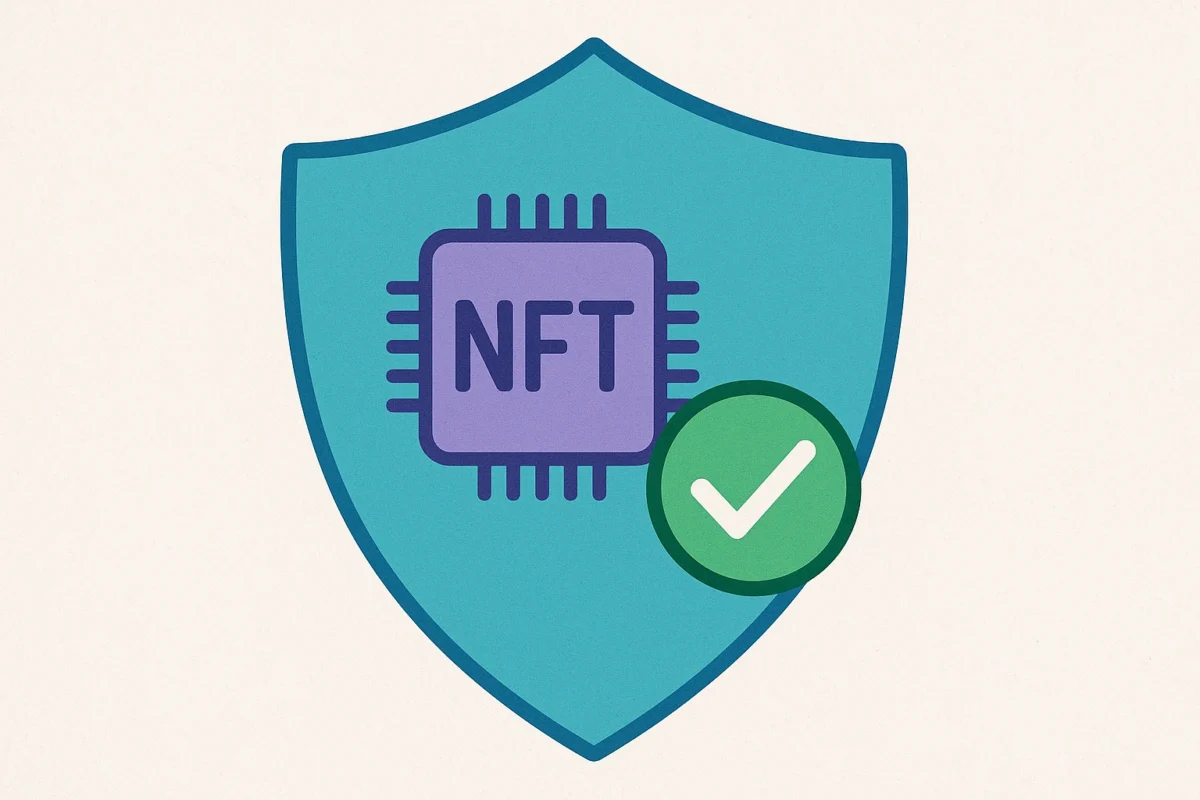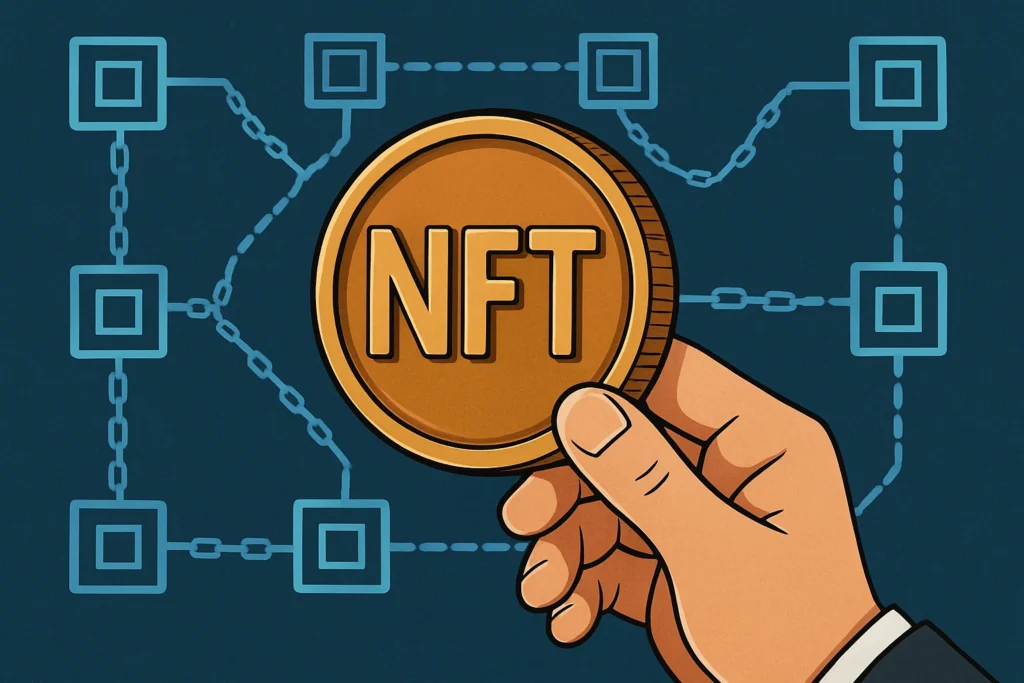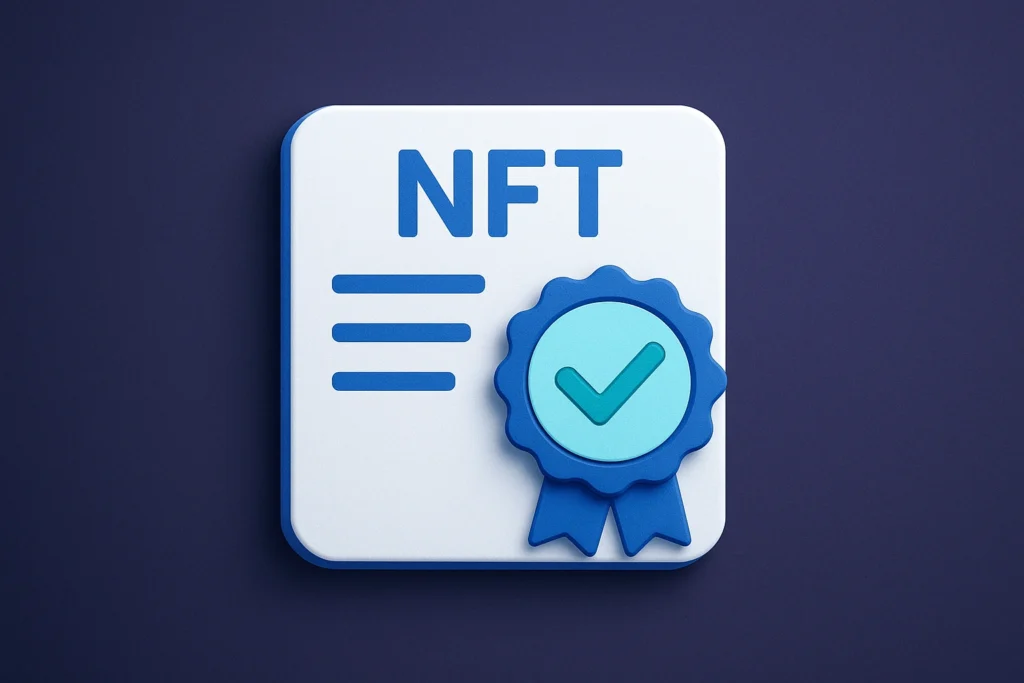Science of NFT Authentication: How Blockchain Guarantees Ownership

The world of digital art and collectibles has absolutely exploded, and with it, the confusion. It begs the question: how can you actually prove you own a digital file when anyone can copy-and-paste it? And how can you be sure an NFT is the genuine article, not just a fake or a replica? The answer lies in the science of NFT Authentication.
The true power behind every verified NFT is a rigorous foundation of cryptography, data integrity, and blockchain verification. They’re the tools that create scarcity and build trust in a digital economy without borders.
In this article, we’re going to unpack the science of NFT authentication, showing you exactly how blockchain systems guarantee authenticity, preserve a collectible’s history (provenance), and secure your ownership rights in a world where replication is effortless.
The Fundamental Problem of Digital Authenticity
For decades, the digital world suffered from the “copy-and-paste” problem. Any digital file like an image, song, or text could be flawlessly duplicated an infinite number of times, making true scarcity impossible. This rendered digital items essentially worthless as collectible or proprietary assets.
The key breakthrough of the blockchain, and subsequently the NFT, was solving this digital authenticity problem. An NFT doesn’t prevent the underlying digital art (the JPEG) from being copied; instead, it creates a unique, verifiable entry on a public, decentralized ledger that proves one specific party owns the token linked to that art. This token is the true asset.
The mechanism that guarantees this is a layered scientific structure built on cryptography and distributed consensus.
Understanding NFT Authentication
At its core, NFT authentication is the process of confirming that a digital asset is original, verifiable, and owned by a specific person or entity. Unlike traditional certificates or signatures, NFTs rely on mathematical certainty rather than institutional trust.
Each NFT (Non-Fungible Token) contains unique metadata stored on a blockchain. That data includes:
Token ID: A distinct digital fingerprint
Creator and owner information: Publicly visible wallet addresses
Transaction history: Immutable proof of origin and ownership transfers
Linked media or asset reference: The digital artwork, file, or collectible itself
The science behind NFT verification revolves around cryptographic verification which is a process that encodes ownership in the blockchain’s digital ledger, making it nearly impossible to alter or counterfeit.
Also See: Can Data Science Help You Spot Undervalued NFTs?
The Blockchain Science Behind Authenticity

Blockchain operates like a digital time capsule. It records every transaction in a public, tamper-proof ledger distributed across thousands of computers.
1. Hashing: Creating Digital Fingerprints
When an NFT is created (or “minted”), its associated data like images, videos, or metadata is processed through a hashing algorithm. A hash is a short alphanumeric code generated from that data. Even changing one pixel in an image changes its hash completely, making forgery easy to detect.
For example:
Original artwork → hash: 0xA92F…
Modified version → hash: 0xB71E…
This unique hash acts as the NFT’s digital fingerprint.
2. Cryptographic Verification
Every NFT transaction is validated through public-key cryptography. When a user purchases or transfers an NFT, their digital signature confirms authenticity.
The blockchain then uses a consensus mechanism (like Proof of Work or Proof of Stake) to confirm the transaction across the network, locking the record permanently.
Simply, if hashing gives an NFT its fingerprint, cryptography gives it its seal of ownership.
3. Immutable Ledger
Once an NFT is recorded, that data cannot be changed or deleted. This permanence is what guarantees NFT authenticity which is a verifiable trail of ownership, or NFT provenance, that anyone can audit.
The result is a living record of digital heritage where every sale, transfer, and owner is transparently documented.
NFT Provenance: The Digital Chain of Custody
In traditional art, provenance is the documented history of ownership and authenticity critical for valuation. NFTs take that concept digital.
Blockchain provenance automatically creates a public “chain of custody” for every asset. Each time an NFT changes hands, that transaction is added as a new block on the chain.
Why Provenance Matters:
Transparency: Anyone can trace an NFT back to its creator.
Verification: Fake or copied NFTs lack a matching blockchain record.
Trust: Collectors can see past owners and transaction dates.
Value Protection: Provenance ensures that ownership claims are verifiable and not fabricated.
Platforms like OpenSea, Blur, and Magic Eden rely on this system to validate creator authenticity before displaying NFTs.
Blockchain Ownership: How Rights Are Guaranteed
Ownership on the blockchain isn’t symbolic, it’s mathematical.
When you buy an NFT, the blockchain records your wallet address as the new owner. This record becomes your proof of ownership, viewable by anyone.
Unlike centralized databases, no single entity controls blockchain ownership. This decentralization means:
No unauthorized alterations: Only you can transfer the NFT.
No fake ownership claims: Every asset can be traced to its rightful wallet.
Permanent record: Even if a marketplace shuts down, the ownership data remains on the blockchain.
This creates what’s known as digital sovereignty which is a verifiable right to own and trade digital assets freely.
Cryptographic Verification in Action
To understand why cryptographic verification is so powerful, imagine this example:
You buy an NFT from a digital artist. Behind the scenes, the system uses cryptographic keys:
- The artist signs the NFT with their private key, proving authorship.
- You, the buyer, receive it in your wallet associated with your public key, proving ownership.
- The blockchain then cross-verifies both through a consensus mechanism. Once approved, the ownership transfer becomes irreversible and visible to everyone on the network.
This eliminates the need for intermediaries, lawyers, or galleries as the blockchain itself becomes the notary.
Scientific Elements That Ensure NFT Security

The reliability of NFT authentication lies in several layers of scientific principles:
1. Decentralization
No single entity controls the blockchain. This ensures resilience and trust.
2. Consensus Mechanisms
Algorithms like Proof of Stake (PoS) and Proof of Work (PoW) validate transactions based on computational consensus, eliminating fraud.
3. Encryption Standards
Strong encryption, such as Elliptic Curve Digital Signature Algorithm (ECDSA), secures NFT transfers and ownership records.
4. Distributed Verification
Every transaction is verified by multiple nodes across the world—making tampering statistically impossible.
Together, these principles make NFT ownership rights scientifically verifiable and cryptographically sound.
Challenges in NFT Authentication
While blockchain provides the infrastructure, NFT authenticity isn’t without challenges:
Off-Chain Storage Risks – Many NFTs store media files on third-party servers, which can be altered or deleted if not decentralized (e.g., using IPFS).
Fake Collections – Counterfeit projects can mimic real NFTs without copying the actual blockchain data.
Metadata Manipulation – Poorly secured smart contracts can be exploited to alter metadata after minting.
Legal Ambiguity – Blockchain ownership doesn’t always translate to copyright ownership unless explicitly stated.
To maintain digital authenticity, next-generation NFT security systems are integrating AI-based verification, real-time blockchain analytics, and creator identity tracking.
FAQ: NFT authentication
How does blockchain guarantee NFT authenticity?
Through hashing, cryptographic signatures, and decentralized consensus ensuring data can’t be altered or duplicated.
Can someone copy my NFT?
They can copy the image, but not the blockchain record. As a result, ownership is proven by the on-chain transaction history, not the media file.
What is NFT provenance?
It’s the verifiable history of an NFT’s creation and ownership recorded permanently on the blockchain.
How secure is NFT ownership?
Extremely secure and protected by cryptographic encryption and decentralized network validation.
Can NFT authentication fail?
Yes, only if the underlying smart contract or storage layer isn’t secure. As a result, it helps Reputable blockchains minimize this risk.
Conclusion
To wrap things up, it’s clear that NFTs aren’t just a fleeting trend; they’re a working model for trust in the digital age. By bringing together blockchain ownership, cryptographic verification, and the documented history of an asset (NFT provenance), the technology achieves something previously unattainable in the digital space.
The ‘science’ of NFT authentication is what underpins digital property rights in Web3. Each verified NFT represents a beautiful intersection of mathematics, coding, and human creativity, a permanent, immutable signature etched into the timeline.